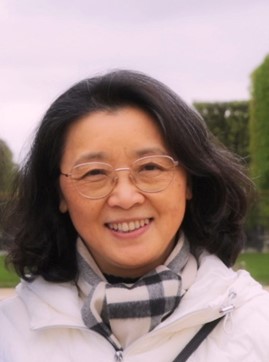报告题目:Electroactive Liquid Crystal Elastomers as Actuators and Sensors
报告人:Min-Hui Li(李敏慧)教授,巴黎文理研究大学
时间:2024年4月30日(周二) 9:30-11:00
地点:商学院210
邀请人:张大朋 教授,李永生 教授

个人简介:
Min-Hui Li is a Research Director in CNRS serving in ENSCP (Ecole Nationale Supérieure de Chimie de Paris) in Paris. She received her B.Sc. (1986) and M.Sc. (1988) from Tsinghua University in Beijing, and her Ph.D. (1993) in Polymer Chemistry and Physical Chemistry from Pierre & Marie Curie University (now Sorbonne University) in Paris. Her Ph.D. work was performed in the Laboratoire Léon Brillouin, CEA Saclay in France. After a post-doc in the French Institute of Petroleum, she joined the French National Center for Scientific Research (CNRS) as a tenure researcher in 1994. She served in the Centre de Recherche Paul Pascal in Bordeaux from 1994 to 1997, in the Curie Institute (Institut Curie) in Paris from 1997 to 2014. Since 2015, she works in ENSCP (also called Chimie ParisTech). Min-Hui Li’s current research mainly focuses on soft matter chemistry, especially on amphiphilic polymers, liquid crystal polymers and elastomers, photosensitive polymers, and polymer self-assemblies for functional soft materials.
报告摘要:
Liquid crystal elastomers (LCEs) show promising potentials as smart actuators, for example, those contracting/expanding linearly like mammalian muscles.[1] Direct heating and light illumination are the most used activation mode in LCE actuators because LCEs are based on thermotropic or phototropic liquid crystals.[1,2,3] However, in the world of actuators, electricalenergy is the most convenient and the most in demand stimuli. Indeed, the nature does use electrical impulses between nerves and muscles or skins for actuation or sensing with extraordinary efficacy, and electrical stimulation is also more widely utilizable as driving forces in industrial devices. Efforts have been made by scientists and engineers to achieve electroactive LCEs (eLCEs).
In this talk, after a general discussion on the principle of LCEs as actuators and the stat-of-the-art of eLCEs, I will present novel trilayer eLCE systems obtained by combining two smart materials, LCE and ionic electroactive polymer device (i-EAD). These trilayer eLCEs are bi-functional and can perform either bending or contractile deformations under low voltage stimulation (< 10V).[4,5] They can also function as sensors to respond to the bending deformation.[5] This approach of combining two smart polymer technologies, i.e., LCE and i-EAD, in a single device, is promising for the development of smart materials with multiple degrees of freedom in the fields of soft robotics, electronic devices, and sensors.
References
[1] M.-H. Li, P. Keller P., Artificial muscles based on liquid crystal elastomers, Phil. Trans. A.364, 2763 (2006).
[2] B. Ni, G. Liu, M. Zhang, P. Keller, M. Tatoulian, M.-H. Li, Large-Size Honeycomb-Shaped and Iris-Like Liquid Crystal Elastomer Actuators, CCS Chemistry, 4, 847 (2022).
[3] B. Ni, G. Liu, M. Zhang, M. Tatoulian, P. Keller, M.-H. Li, Customizable Sophisticated 3D Shape Changes of Large-size Liquid Crystal Elastomer Actuators, ACS Appl. Mater. Interfaces, 13, 2021).
[4] G. Liu, Y. Deng,G. Nguyen, C. Vancaeyzeele, A. Brûlet, F. Vidal,C. Plesse, M.-H. Li, Electroactive Bi-functional Liquid Crystal Elastomer Actuators,Small, 2023, 2307565.
[5] Y. Deng,G. Liu, A. Brûlet, G. Nguyen, D. Dudzinski, F. Vidal,C. Plesse, C. Vancaeyzeele, M.-H. Li, Interpenetrating Liquid Crystal Elastomer and Ionogel as Tunable Electroactive Actuators and Sensors. Adv. Funct. Mater. 2024, under review.